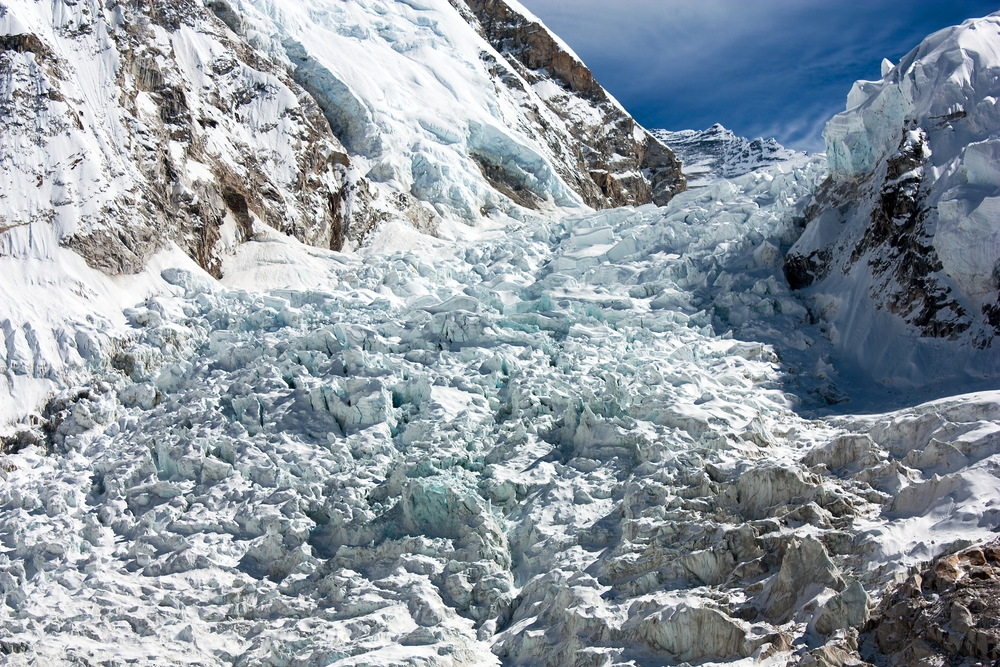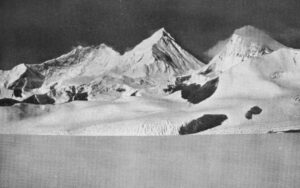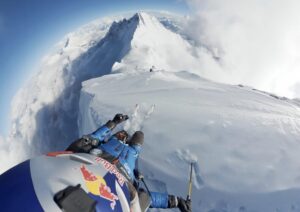We’re already in the second half of April and no one has set foot on Everest’s higher camps yet. That’s late. The situation is particularly tense on the South Side, where Base Camp swarms with impatient climbers, wondering why the route to Camp 1 isn’t ready.
Amid the uncertainty, there’s one simple reality: the difficulty that the sherpas face every year finding a way through the treacherous Khumbu Icefall.
Tension rising
The climb on the South Side of Everest should have started at least two weeks ago. Climbers, especially those without bottled oxygen, should be already rotating to Camp 2 at 6,400m. However, the route through the Icefall isn’t ready.
“I am looking for acclimatization options on neighboring peaks,” Valeri Babanov of Russia reported, shortly before heading to Lobuche Peak for a night in his tiny tent at 6,000m.
Expedition leaders are also concerned about crowding when the route finally opens. At that time, swarms of staff and clients will hop to work and may cause traffic jams at the various bottlenecks.
So what happened?
The main reason for the delay: the route that the Icefall Doctors had hoped to open led to a dead end. Twice.
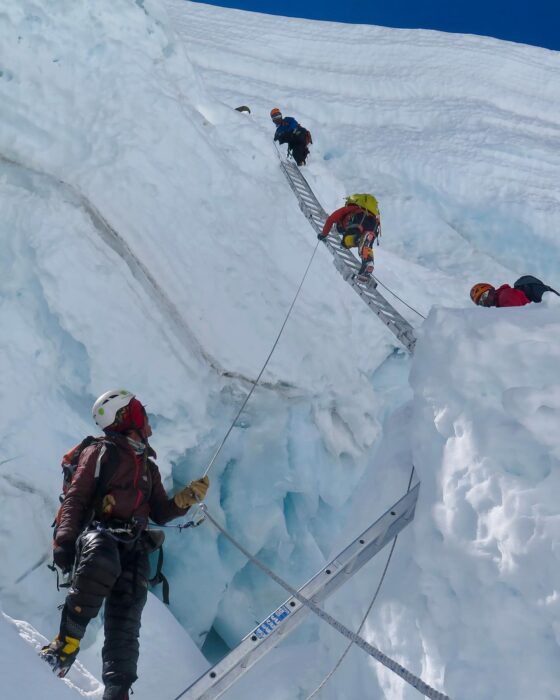
Climbers in the Khumbu Icefall. Photo: Pasang Rinzee
“First, they tried to go close to Nuptse and encountered a crevasse that couldn’t be crossed,” the Sagarmatha Pollution Control Committee (SPCC) told Dawa Steven Sherpa of Asian Trekking. “Then they turned back and tried to go through the middle of the Icefall, but eventually hit a huge, overhanging serac.
“They were hoping the serac would collapse any day, but so far, it is still in place. Finally, they have now moved to the “old route” to the left of the icefall, near the West Shoulder.”
Danger from the West Shoulder
The good news is that the sherpa team has managed to reach the flat section near Camp 1. That means the Western Cwm is open, and teams can start working in a day or two.
But there is a reason that teams have avoided that classical route until now. It was abandoned after a piece of serac fell from the West Shoulder in 2014, causing what was then the worst human tragedy on Everest.
Since then, the sherpas fixing the ropes and ladders from Base Camp have forged a more easterly route through the middle maze of seracs. This avoids traveling under the treacherous hanging glacier on the West Shoulder.
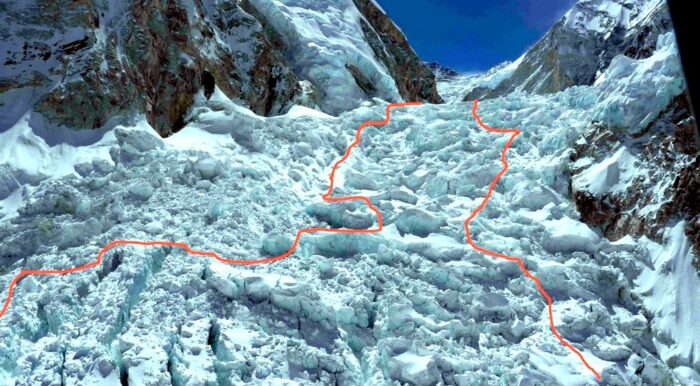
The classic route through the Khumbu Icefall was replaced by a new one closer to Nuptse in 2015. Photo and route lines: Garrett Madison
Another gigantic piece of serac hanging from the West Shoulder thwarted climbing attempts in the fall and winter of 2019. See the photo below.
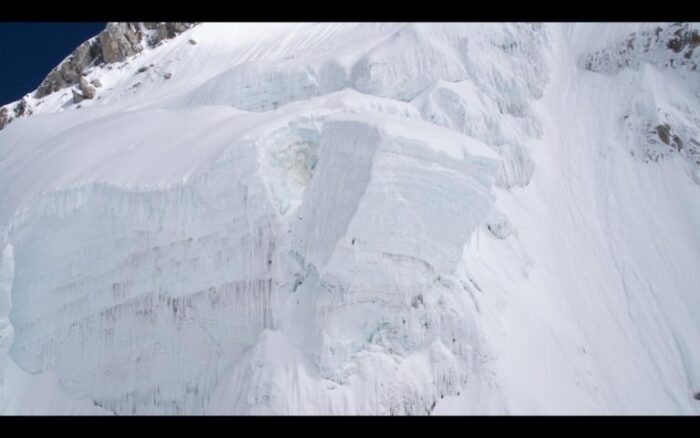
A huge serac hangs from Everest’s West Shoulder in the fall of 2019. It forced Andrzej Bargiel and team to abort their climb. Frame of a video by Bartek Bargiel
It is unclear whether the current route may change during the season. The Ice Doctors continually maintain the route and are always looking for the safest possible option. However, there is no safe way up the Icefall. Some routes are just more lethal than others.
Thinking of solutions
“In recent years, the route was pretty close to the West Shoulder in the upper part, and closer to Nuptse in the lower part,” Lukas Furtenbach told ExplorersWeb.
Furtenbach has had close calls in both sections — the upper part in 2022 and the lower part in 2016.
“Both sides have their potential for gravitational processes that can hit the route,” he added.
Furtenbach says there is simply no 100% safe route through the Icefall, so minimizing exposure time there for clients and sherpas is vital.
“Fewer rotations, ideally only one, and faster speeds would limit…individual risk significantly.”
But then how will the sherpas supply the large high-altitude camps? For Furtenbach, the best solution is to use helicopters. According to the regulations set earlier this year, only ropes can to be airlifted up the Icefall — not oxygen, gear, or supplies.
“Why not allow cargo?” Furtenbach wonders. “Why risk the lives of sherpas?”
In the search for alternatives, note that Marc Batard of France is again in Nepal, continuing his plan to open and permanently fix an alternative route along the flank of Nuptse, which avoids the Icefall. It traverses above the glacier to Camp 2 in the Valley of Silence.
Batard has chipped away at this project for two years but has not gathered as much support as expected, since his sections under Nuptse are also prone to avalanches and serac fall. In their previous expeditions, Batard’s team had not yet reached the riskier sections.
North Side delayed too
Furtenbach Adventures has a team on Everest’s South Side, but Lukas Furtenbach himself is leading a second group on the North Side. Herein, another source of anxiousness: As with Shisha Pangma, the visas and permits for foreigners who want to climb Everest North Side are not yet ready.
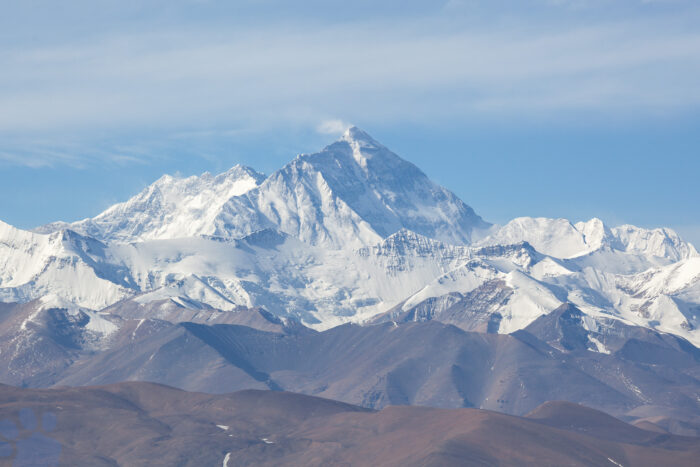
The North Side of Everest (in shade), and Lhotse on the left. Photo: Jamie McGuinness
There is a difference, though: the China-Tibet Mountaineering Association (CMTA) and China’s tourism officials have announced that Everest is finally open to foreign expeditions. On the other hand, they have not officially given the green light to Shisha Pangma or Cho Oyu for this spring.
Expeditions hope that bureaucratic issues will sort themselves out soon. “Entry to Tibet is delayed for everyone, but the CTMA is doing its best to help all teams get their permits,” Furtenbach said.
